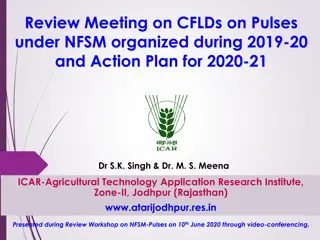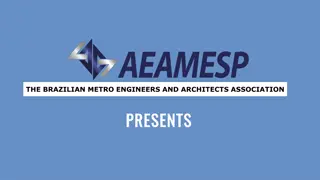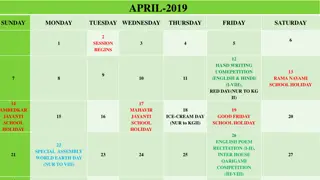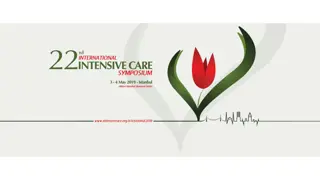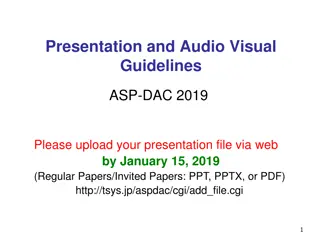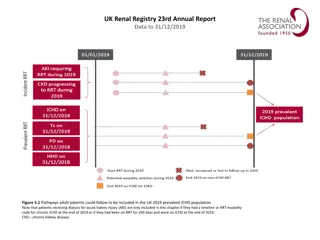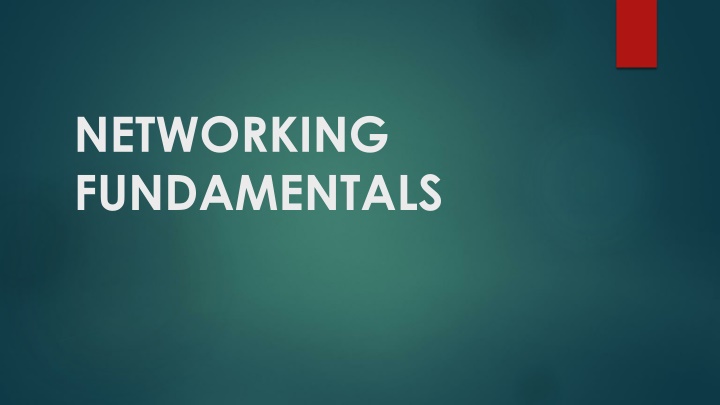
Fundamentals of Data Communication and Networking
Explore the basics of data communication and networking, covering topics such as data exchange, information processing, network protocols, and standards. Learn about data characteristics, components, flow types, computer networks, protocols, and more. Enhance your understanding of the key elements involved in seamless data exchange globally.
Download Presentation

Please find below an Image/Link to download the presentation.
The content on the website is provided AS IS for your information and personal use only. It may not be sold, licensed, or shared on other websites without obtaining consent from the author. If you encounter any issues during the download, it is possible that the publisher has removed the file from their server.
You are allowed to download the files provided on this website for personal or commercial use, subject to the condition that they are used lawfully. All files are the property of their respective owners.
The content on the website is provided AS IS for your information and personal use only. It may not be sold, licensed, or shared on other websites without obtaining consent from the author.
E N D
Presentation Transcript
NETWORKING FUNDAMENTALS
Unit Structure 1.0 Objectives 1.1 Introduction 1.2 Data & Information 1.3 Data Communication 1.3.1 Characteristics of Data Communication 1.3.2 Components of Data Communication 1.4 Data Representation 1.5 Data Flow 1.5.1. Simplex 1.5.2. Half Duplex 1.5.3. Full Duplex 1.6 Computer Network 1.6.1 Categories of a network 1.7 Protocol 1.7.1 Elements of a Protocol 1.8 Standards in Networking 1.8.1 Concept of Standard 1.8.2 Standard Organizations in field of Networking 1.9 References
1.0 OBJECTIVES: Introduce the readers to data communication and its fundamentals Define networks Define protocols Standards in networking 1.1 INTRODUCTION This Lecture provides an introduction to computer networks and covers fundamental topics like data, information to the definition of communication and computer networks. The main objective of data communication and networking is to enable seamless exchange of data between any two points in the world. This exchange of data takes place over a computer network.
1.2 DATA & INFORMATION Data refers to the raw facts that are collected while information refers to processed data that enables us to take decisions. Ex. When result of a particular test is declared it contains data of all students, when you find the marks you have scored you have the information that lets you know whether you have passed or failed. The word data refers to any information which is presented in a form that is agreed and accepted upon by is creators and users.
1.3 DATA COMMUNICATION Data Communication is a process of exchanging data or information In case of computer networks this exchange is done between two devices over a transmission medium.
1.3.1 Characteristics of Data Communication The effectiveness of any data communications system depends upon the following four fundamental characteristics: 1. Delivery: The data should be delivered to the correct destination and correct user. 2. Accuracy: The communication system should deliver the data accurately, without introducing any errors. The data may get corrupted during transmission affecting the accuracy of the delivered data. 3. Timeliness: Audio and Video data has to be delivered in a timely manner without any delay; such a data delivery is called real time transmission of data. 4. Jitter: It is the variation in the packet arrival time. Uneven Jitter may affect the timeliness of data being transmitted.
1.3.2 Components of Data Communication A Data Communication system has five components as shown in the diagram below: Fig(1) Components of a Data Communication System 1. Message: Message is the information to be communicated by the sender to the receiver. 2. Sender: The sender is any device that is capable of sending the data (message). 3. Receiver: The receiver is a device that the sender wants to communicate the data (message). 4. Transmission Medium: It is the path by which the message travels from sender to receiver. It can be wired or wireless and many subtypes in both. 5. Protocol: It is an agreed upon set or rules used by the sender and receiver to communicate data. -A protocol is a set of rules that governs data communication. -A Protocol is a necessity in data communications without which the communicating entities are like two persons trying to talk to each other in a different language without know the other language.


